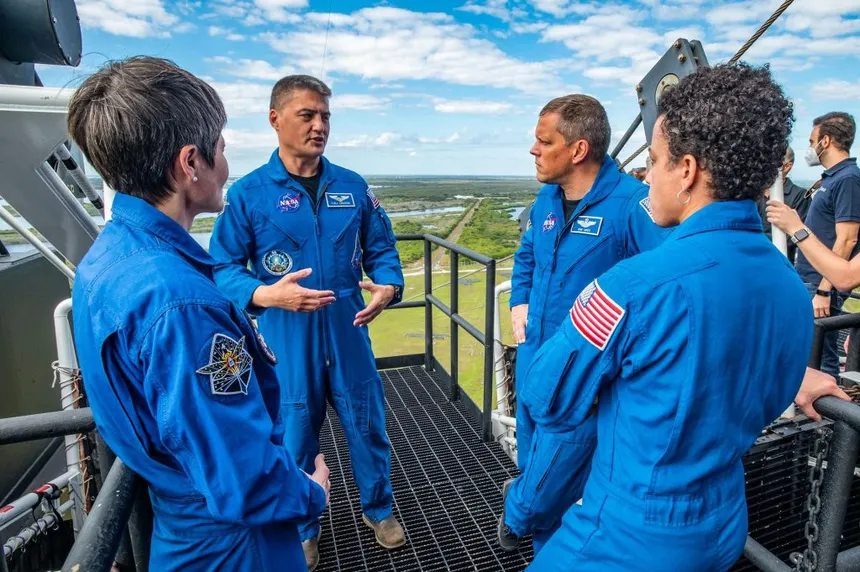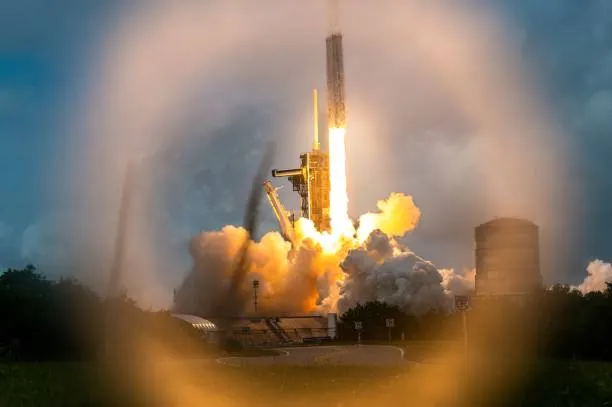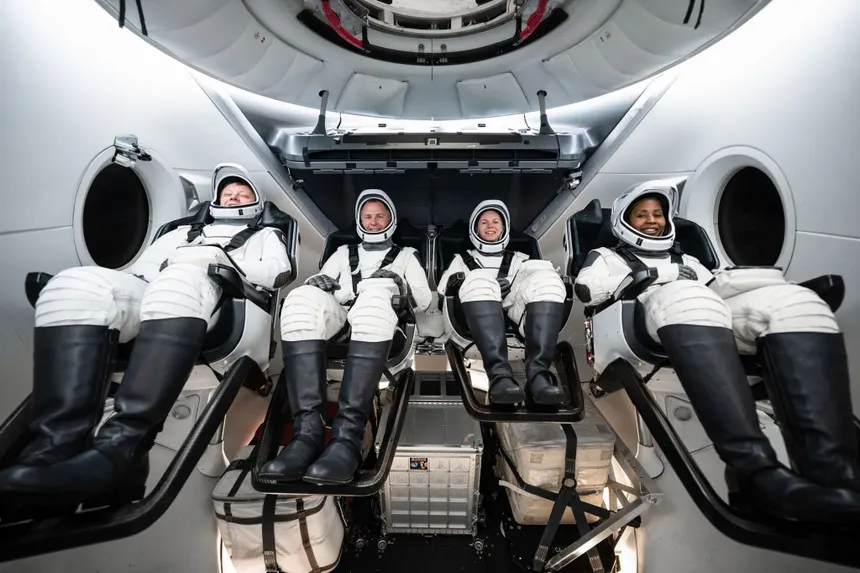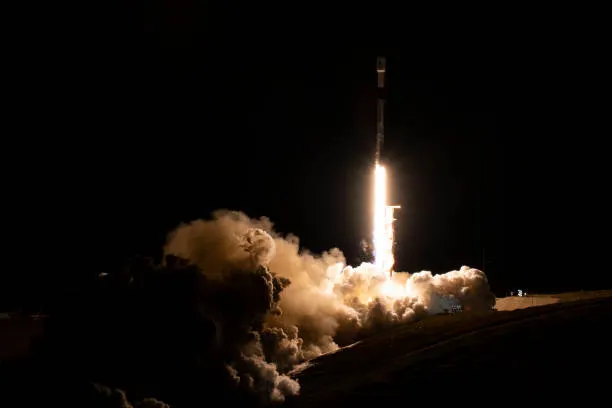A New Era of Space Exploration
The world of space exploration is changing faster than ever, thanks to the combined efforts of SpaceX and NASA. With cutting-edge technology, ambitious projects, and a vision for interplanetary travel, these two giants are revolutionizing the way humans explore space.
From missions to Mars and the Moon to private space travel, NASA and SpaceX are making space more accessible than ever before. But what does the future hold? In this article, we’ll take a deep dive into the latest advancements, upcoming missions, and how these organizations are shaping the future of space.

The Role of SpaceX in Future Space Missions
1. The Rise of SpaceX: A Game Changer in Space Technology
Founded by Elon Musk in 2002, SpaceX has completely transformed the aerospace industry. Here’s why SpaceX is leading the way:
- Reusable Rockets: SpaceX developed Falcon 9 and Falcon Heavy, both designed for reusability, drastically reducing the cost of space travel.
- Starship: The Future of Space Travel: The upcoming Starship rocket aims to transport humans to Mars and beyond, making interplanetary travel a reality.
- Collaboration with NASA: SpaceX’s Crew Dragon has already transported astronauts to the International Space Station (ISS), proving that private companies can play a crucial role in space exploration.
2. The Mars Mission: Making Life Multiplanetary
Elon Musk has one ultimate goal: colonizing Mars. SpaceX is working on key technologies to make this dream a reality:
- Starship’s Mars Mission: SpaceX is developing Starship, a fully reusable rocket that will transport cargo and humans to Mars.
- Sustainable Mars Colonization: SpaceX is working on water extraction, oxygen production, and food supply to make Mars livable.
- Expected Timeline: Musk predicts the first human landing on Mars could happen by the 2030s.
3. Space Tourism: Traveling to Space for Everyone
SpaceX is also opening space travel to private individuals. Some recent developments include:
- Inspiration4 Mission: The first all-civilian crew was launched into space in 2021, marking a major milestone for space tourism.
- Upcoming Missions: SpaceX is planning private lunar missions and orbital space tourism, making space travel more accessible to wealthy individuals and researchers.

NASA’s Plans for the Future of Space Exploration
1. NASA’s Artemis Program: Returning to the Moon
NASA has set its sights on the Moon once again with the Artemis program. Here’s what to expect:
- Artemis I: An uncrewed mission launched in 2022 to test the new Space Launch System (SLS).
- Artemis II: Scheduled for 2025, this mission will send astronauts around the Moon.
- Artemis III: The first crewed lunar landing since 1972, set for 2026, with plans to establish a long-term lunar base.
2. NASA & SpaceX: A Strong Partnership
NASA has partnered with SpaceX to achieve critical missions:
- Commercial Crew Program: SpaceX’s Crew Dragon transports astronauts to the ISS, reducing NASA’s reliance on Russia’s Soyuz spacecraft.
- Lunar Missions: NASA has selected SpaceX’s Starship as the landing system for Artemis III.
- Deep Space Exploration: NASA is working with SpaceX on advanced technologies for missions to Mars and beyond.

The Challenges of Space Exploration
1. Funding and Budget Issues
Space missions require billions of dollars. The biggest challenges include:
- Government Funding: NASA relies on government budgets, which can delay projects.
- Private Investment: SpaceX, being a private company, needs investors to fund missions.
- Cost of Rockets: While reusability has reduced costs, sending humans to Mars still requires significant financial backing.
2. Technical and Safety Challenges
Space travel is risky. Some key challenges include:
- Radiation Exposure: Astronauts traveling to Mars will face high radiation levels, which could be dangerous for human health.
- Rocket Failures: Space travel is unpredictable; even with advanced technology, launch failures can still occur.
- Surviving on Mars: Establishing a self-sustaining colony will require innovative solutions in food production, shelter, and air supply.

The Future of Space Exploration: What’s Next?
1. Space Habitats: Living Beyond Earth
NASA and SpaceX are working on building space habitats where humans can live for long durations. Some upcoming projects include:
- Lunar Gateway: A space station orbiting the Moon, designed to support future lunar and Mars missions.
- Mars Bases: Plans for underground shelters and self-sufficient colonies on Mars.
2. AI and Robotics in Space
Artificial Intelligence (AI) and robots will play a key role in space exploration:
- AI-powered Rovers: NASA’s Perseverance rover is already exploring Mars and collecting samples.
- Autonomous Spacecraft: Future missions will use AI for navigation, repairs, and data collection.
- Robotic Assistants: NASA is developing robots to assist astronauts with daily tasks in space.
3. The Search for Alien Life
One of the most exciting aspects of space exploration is the search for extraterrestrial life. NASA and SpaceX are focusing on:
- Europa Clipper Mission: A mission to explore Jupiter’s moon Europa, which may have an ocean beneath its icy surface.
- Mars Sample Return: NASA is working on bringing Mars rock samples back to Earth to search for microbial life.
- Exoplanet Research: The James Webb Space Telescope is scanning distant planets for signs of life.
Conclusion: The Future is Here
SpaceX and NASA are pushing the boundaries of what is possible in space. With missions to the Moon, Mars, and beyond, the dream of space exploration is becoming a reality.
While challenges remain, the future looks promising. In the next few decades, we could see humans living on the Moon, private citizens traveling to space, and the first humans setting foot on Mars.
The partnership between NASA and SpaceX proves that space exploration is no longer a distant dream—it’s happening right now. The question is no longer “Will we explore space?” but “How far will we go?”
The Future of Electric Vehicles in the American Auto Industry: What’s Next?





